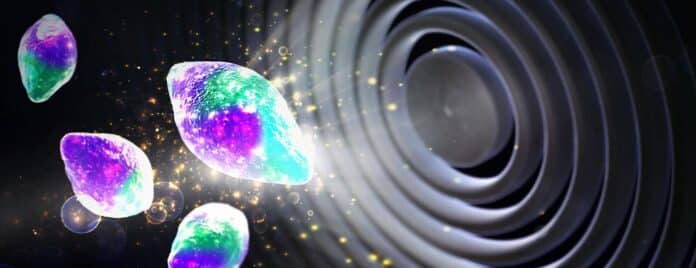A rechargeable lithium-ion battery consists of electrodes- responsible for storing charge and making it available when needed to do work. As shown in X-ray movies, these electrodes pack billions of tiny particles inside, which absorb and release lithium ions as the battery charges and discharges.
Now, researchers from the Department of Energy’s SLAC National Accelerator Laboratory, Stanford University, the Massachusetts Institute of Technology, and Toyota Research Institute made a significant advancement: They analyzed every single pixel of those X-ray videos using a machine learning technique called “computer vision” to uncover previously unseen physical and chemical aspects of battery cycling.
The new technique has already suggested how to improve the efficiency of charge storage and release in one type of lithium-ion battery electrode, which contains billions of nanoparticles.
William Chueh, a Stanford associate professor, SLAC faculty scientist, and director of the SLAC-Stanford Battery Center, said, “Now we can extract insights that were impossible before. This is the kind of fundamental, science-based information that our partners in the industry need to develop better batteries faster.”
“More broadly, this approach to discovering the physics behind complex patterns in images could even provide unprecedented insights into other chemical and biological systems, such as cells dividing in a developing embryo.”
The lithium iron phosphate, or LFP, is used in the battery particles that the research team looked at. Each one is covered with a small layer of carbon to increase the electrode’s electrical conductivity, and billions of them are crammed into the positive electrodes of several lithium-ion batteries.
Chueh’s team creates tiny, transparent cell batteries with two electrodes surrounded by an electrolyte solution with freely moving lithium ions to observe what is happening inside the battery as it is being used.
In a process known as intercalation, lithium ions rush into the positive LFP electrode during battery discharge and settle inside its nanoparticles like vehicles in a busy parking lot. They flow back out when the battery is charged and move to the opposite negative electrode.
The team began using MIT-developed machine learning technologies with support from Toyota Research Institute to drastically speed up battery testing and narrow down a wide range of charging methods to find the most effective ones. To find and explain a process that reduces the lifespan of fast-charging lithium-ion batteries, they also coupled traditional machine learning, which searches for patterns in data, with knowledge gathered from experiments and equations guided by physics.
In this study, scientists used computer vision to mine more detailed information from 62 nanoscale X-ray movies they made in 2016 of LFP particles charging or discharging.
The smallest units of information that can be extracted from an image, created with X-ray photons striking a detector or with visible light hitting a smartphone camera, were included in each still image from those movies, which had about 490-pixel resolution. They have roughly 180,000 pixels of data to work with as a result.
The scientists used these 180,000 pixels to train their computational model, which then generated equations that precisely detailed the course of the lithium insertion processes. They found that the ions’ motions within the LFP particles closely matched computational calculations.
MIT Professor Martin Bazant said, “Every little pixel in there is jumping from full to empty, full to empty. And we’re mapping that whole process, using our equations to understand how that’s happening.”
“The new technique has revealed several phenomena that couldn’t be seen before, including variations in the rate of lithium insertion reactions in different regions of a single LFP nanoparticle. There are regions that seem to be fast and others that seem to be slow.”
The most important practical conclusion of the work could result in more effective charging and discharging: differences in the thickness of the carbon coating on an LFP particle directly regulate the rate at which lithium ions flow in and out.
The complex interactions between the intercalation reaction and variations in the thickness of the carbon coating on the particle surfaces at the interface between the liquid electrolyte and the solid electrode materials control battery operations. That means that our focus should be on engineering that interface.
Toyota Research Institute’s Storey added, “This publication is the culmination of six years of dedication and collaboration. This technique allows us to unlock the inner workings of the battery in a way not previously possible. Our next goal is to improve battery design by applying this new understanding.”
Journal Reference:
- Zhao, H., Deng, H.D., Cohen, A.E., et al. Learning heterogeneous reaction kinetics from X-ray videos pixel by pixel. Nature 621, 289–294 (2023). DOI: 10.1038/s41586-023-06393-x
